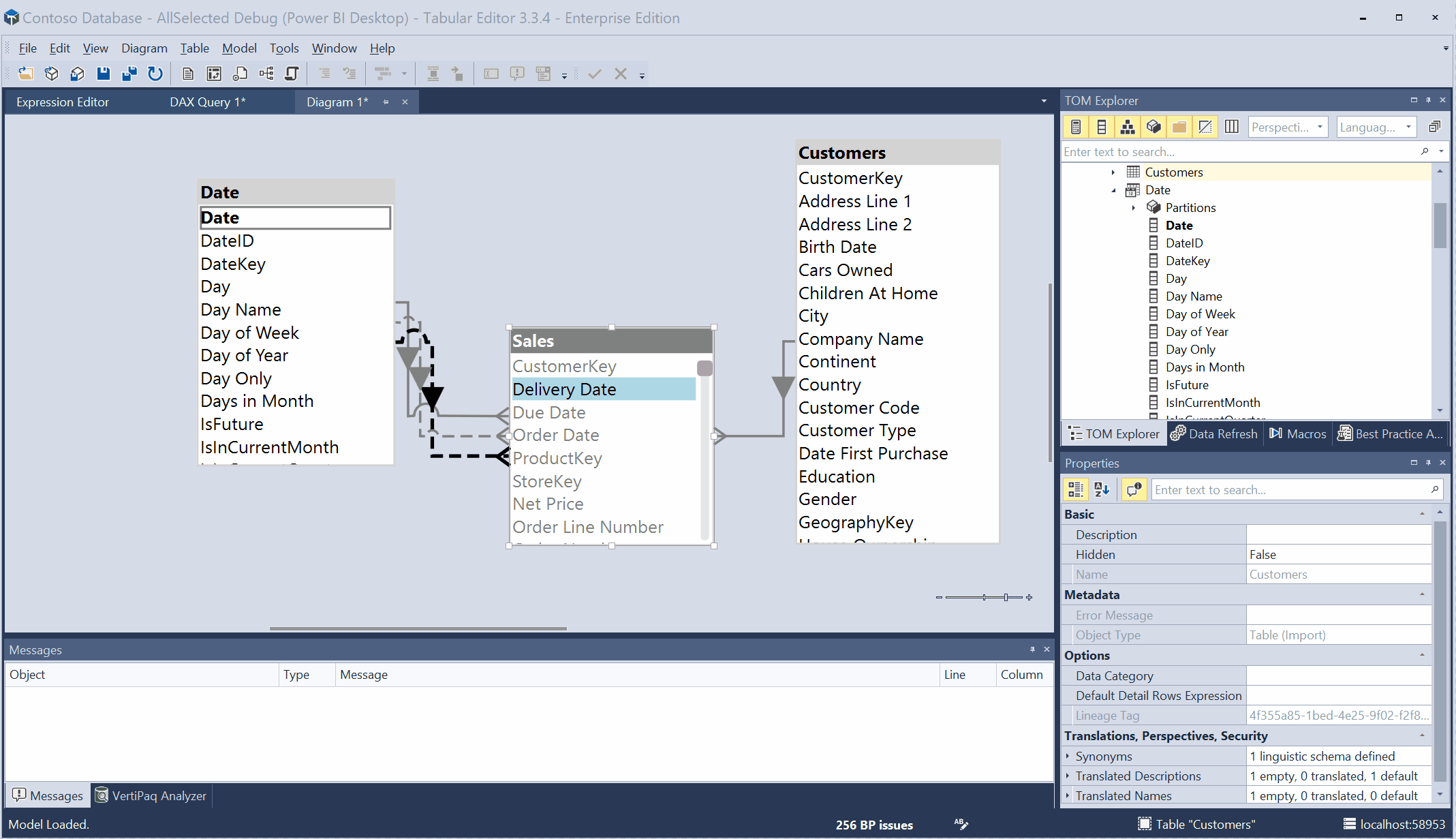Working With Multiple Windows in Tabular Editor 3
/If you have started using Tabular Editor 3, and I highly recommend you do if you do any serious development work with Power BI/Tabular models, you should spend some time working with the tabs and making the most of the screen real estate.
This doesn’t really deserve a full blog post, but the animated GIF I created to demonstrate what I am talking about is too big for Twitter, so here is a small post explaining it.
Below there are 3 tabs: Expression Editor, a DAX Query, and a Diagram. I was working on a laptop where screen real estate was precious so wanted to toggle between the diagram and the DAX query using the Windows ALT-TAB shortcut.
Simply drag the Diagram tab out until it is free floating. Now it is part of the Windows ALT-TAB process. When done, drag it back into Tabular Editor until it is in the middle of that tiny control the red arrow is pointing to.
Of course, if you have multiple monitors or one of those crazy 49” monitors, you could drag tabs out to different areas to look at at the same time.







